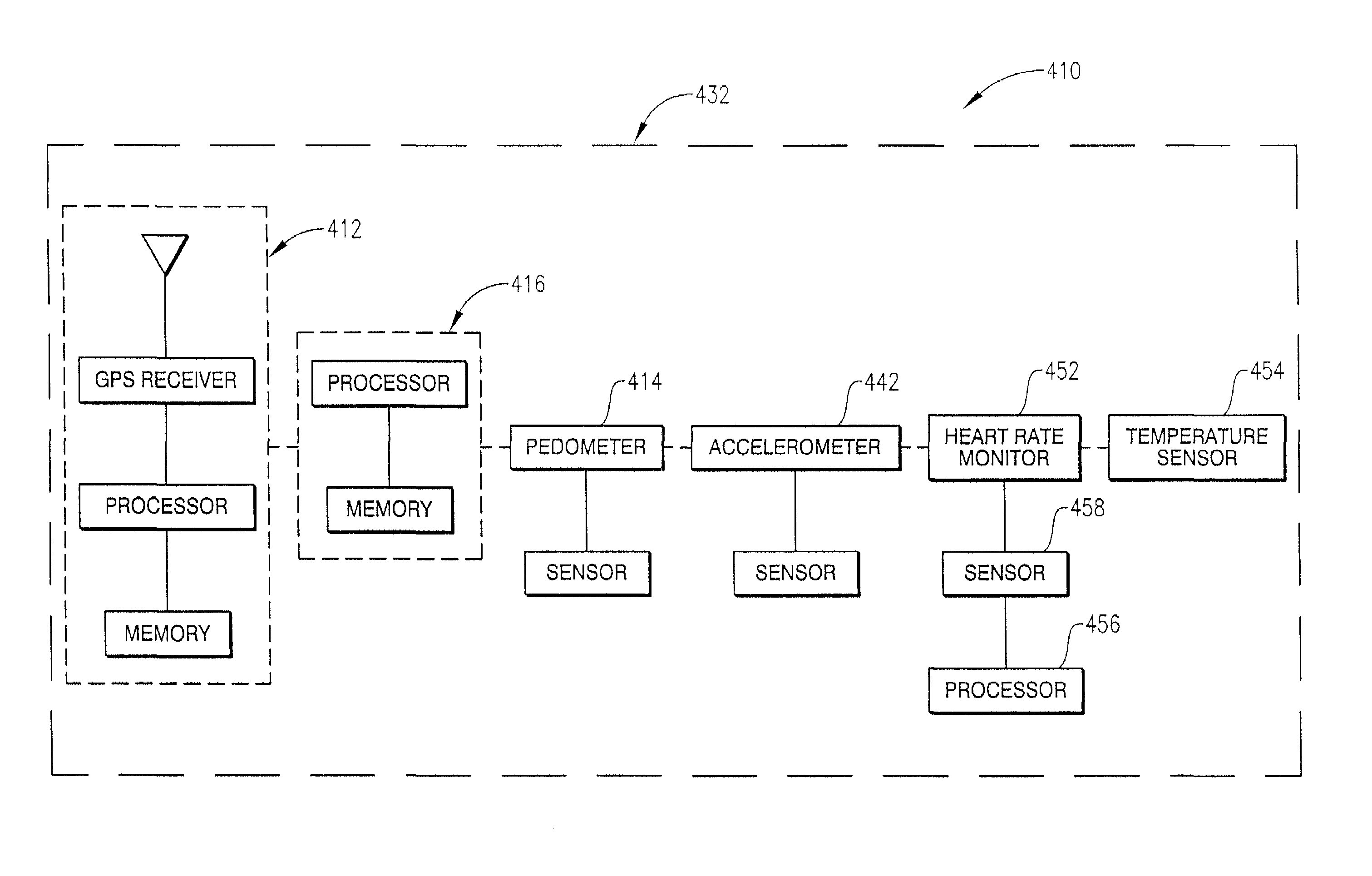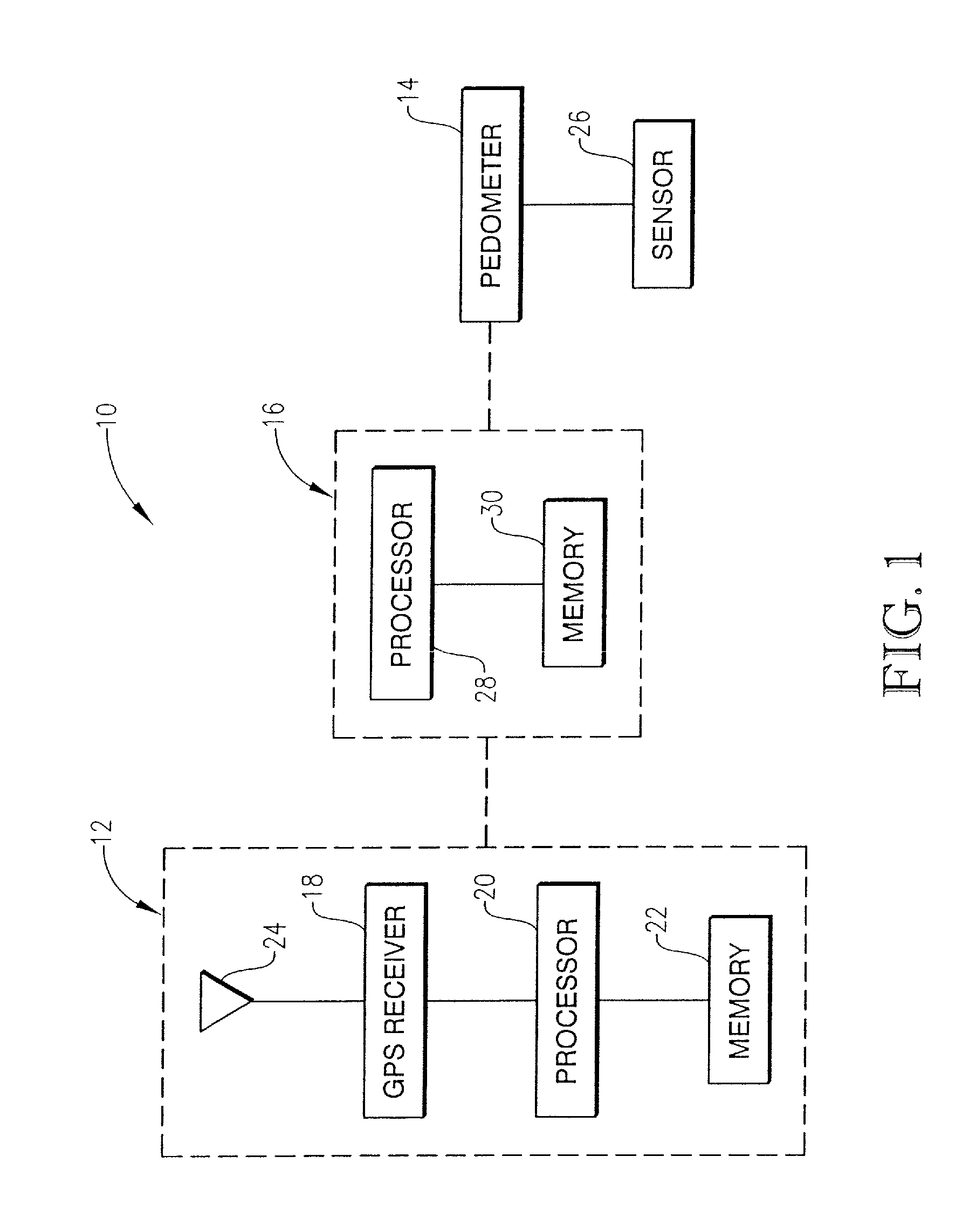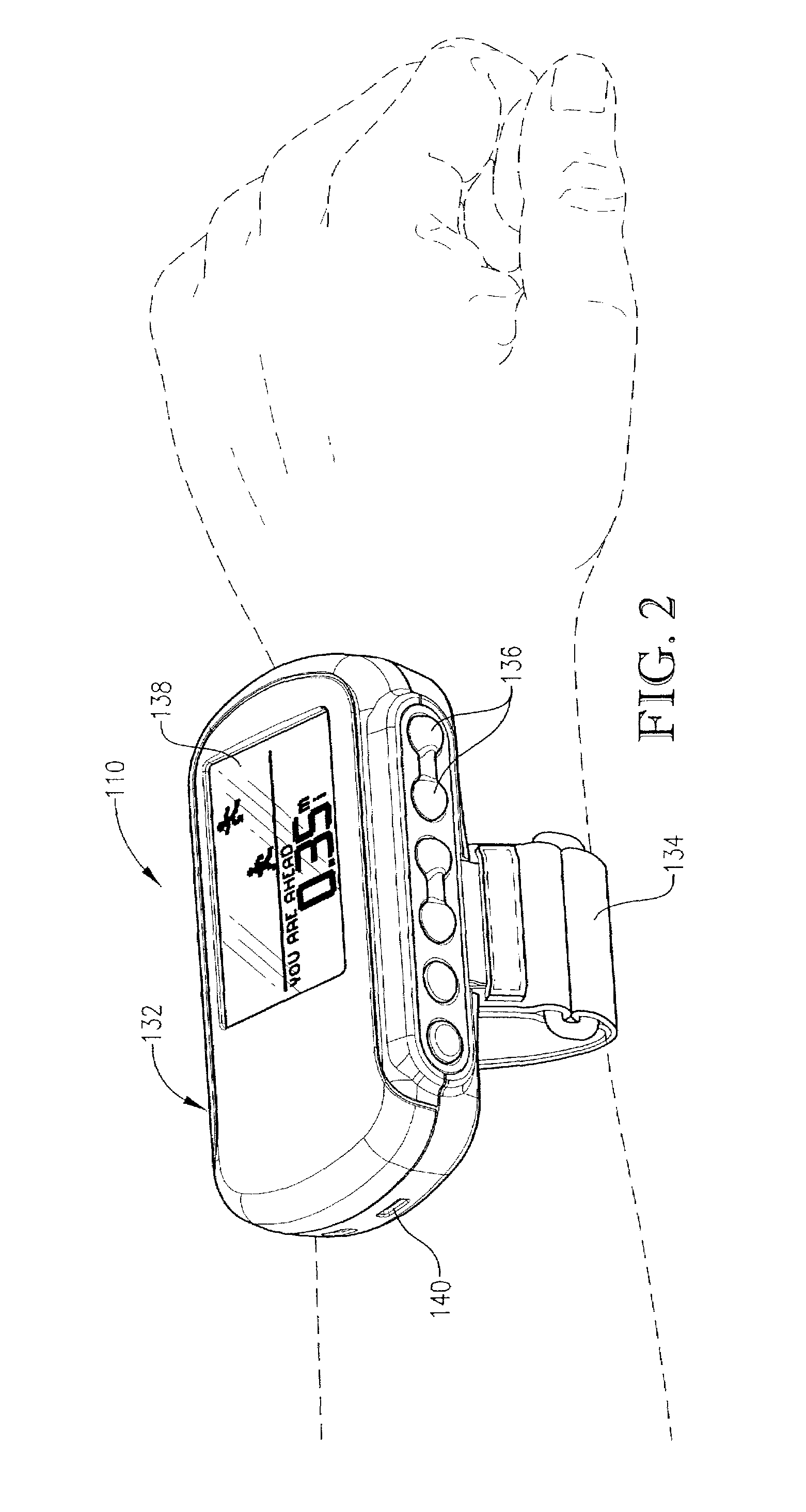Electronic exercise monitor and method using a location determining component and a pedometer
a technology of electronic distance measurement and location determining component, which is applied in the field of exercise monitors, can solve the problems of inaccurate measurement of distance traveled by as much as 10-20%, inability to operate gps receivers, and inaccurate accelerometer measurements, so as to facilitate user's first use, avoid user having to perform complicated, time-consuming initial calibration steps, and accurately obtain the distance traveled
- Summary
- Abstract
- Description
- Claims
- Application Information
AI Technical Summary
Benefits of technology
Problems solved by technology
Method used
Image
Examples
Embodiment Construction
[0035]Turning now to the drawing figures, and particularly FIGS. 1 and 2, an electronic device 10 for measuring a distance traveled by a user is shown constructed in accordance with a first preferred embodiment of the invention. The electronic device 10 of the first preferred embodiment broadly comprises a location determining component 12, a pedometer 14, and a computing device 16 that are in communication with each other by any suitable means, such as radio frequency, infrared, hardwired electrical communication, or wireless technology sold under the trademark BLUETOOTH. The electronic device 10 is operable to accurately measure a distance traveled by sensing, via the pedometer 14, a plurality of steps taken by the user and calculating, via the location determining component 12 and the computing device 16, the user's step size. The electronic device 10 may determine the distance traveled even when the location determining component 12 is inaccessible or inoperable. As such, the el...
PUM
 Login to View More
Login to View More Abstract
Description
Claims
Application Information
 Login to View More
Login to View More - R&D
- Intellectual Property
- Life Sciences
- Materials
- Tech Scout
- Unparalleled Data Quality
- Higher Quality Content
- 60% Fewer Hallucinations
Browse by: Latest US Patents, China's latest patents, Technical Efficacy Thesaurus, Application Domain, Technology Topic, Popular Technical Reports.
© 2025 PatSnap. All rights reserved.Legal|Privacy policy|Modern Slavery Act Transparency Statement|Sitemap|About US| Contact US: help@patsnap.com



